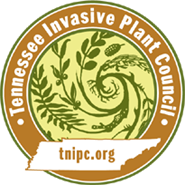Senna obtusifolia (L.) H.S. Irwin & Barneby
Senna obtusifolia (L.) H.S. Irwin & BarnebyJava-bean, Sicklepod Senna
| Category |
|---|
| Forb/Herb |

Description
Height
Sicklepod grows 1-2.5 feet (0.3-0.8 m) tall.Stem
The stem is light green and somewhat ridged. The lower stems often sprawl along the ground in open areas, otherwise this plant is erect.Leaves
The compound leaves alternate along the stems. They are evenly pinnate, usually with 3 pairs of leaflets, and have long leaf stems (primary petioles). The obovate leaflets are individually 1.5 inches (3.8 cm) long and 1 inch (0.3 cm) across. They are devoid of hairs, and are light green on the underside. There is an extra-floral nectary close to the lowest pair of leaflets on the upper side of each compound leaf. This nectary resembles a small brown spike. The foliage has a slightly rank odor.Flowers
One or two flowers develop from the upper axils of the compound leaves. These flowers have pedicels about 1 inch (0.3 cm) long and tend to nod slightly downward. They are about 1 inch (0.3 cm) across, and consist of 5 rounded yellow petals and 10 stamens; the petals are often slightly unequal in size. The flowers are subtended by a light green calyx that is divided into 5 folded sepals; these sepals are shorter than the petals and hairless. The blooming period occurs from late summer through the fall, and lasts about 1-2 months. There is no floral scent. A long seedpod develops from each flower that is 4-6 inches (10-15 cm) long, but only 1/3 inch (1.7 cm) across. This seedpod curves downward and resembles a sickle in its overall shape.Fruit
The fruit is a slender pod up to 7 inches (18 cm) long, 0.2 inch (5 mm) wide. It is 4-angled in cross section and usually curved downward. The pods are green and turn brown as the seeds mature.Images
Photo: Gerald Holmes, Valent USA Corporation, Bugwood.orgMore images of Senna obtusifolia
Life History
It is a member of the Fabaceae (Leguminosae) Family and is an annual plant. The ability to germinate at relatively low soil moisture levels and high seed production may help account for the rapid establishment of this weed species. A single plant can produce up to 8,000 seeds. The root system consists of taproot. Mammalian herbivores are unlikely to use this plant as a food source to any significant extent because of the unpleasant taste and toxic nature of the foliage, which has been found capable of poisoning livestock.Similar to Senna tora except for presence of a single gland at the rachis of the lower pair of leaflets. Also the petals and the flower stalk are longer in this species.
Habitat
The preference is full sun and moist to slightly dry conditions. This plant tolerates different kinds of soil, from fertile loam to gravelly soil; in fact, it often thrives in railroad ballast. Drought tolerance is good, and the foliage is rarely bothered by foliar disease. It is somewhat slow to develop for an annual plant, and tends to bloom late. It is common in many south-central and southeastern states of the US; it also occurs in the American tropics. Habitat information is scanty, but it has been observed in moist meadows along rivers, open areas along railroads, and in waste areas. It could probably thrive in disturbed areas of prairies.Origin and Distribution
Sicklepod is native of tropical America. This plant spreads by reseeding itself. Seeds are explosively released from ripe pods. Long distance dispersal is mainly by water, in mud, with harvested sugar cane, or by vehicles and machinery. Seeds also germinate in livestock dung. Other States Where Invasive: AL, CA, TN. Federal or State Listed as Noxious Weed, Prohibited, Invasive or Banned: CASources
Noxious Weeds of Australia. W. Parsons and E. Cuthbertson, 1992, pages 457–459.Sicklepod (Senna obtusifolia) in Queensland. A. Mackey et al., 1997, Department of Natural Resources, Queensland
